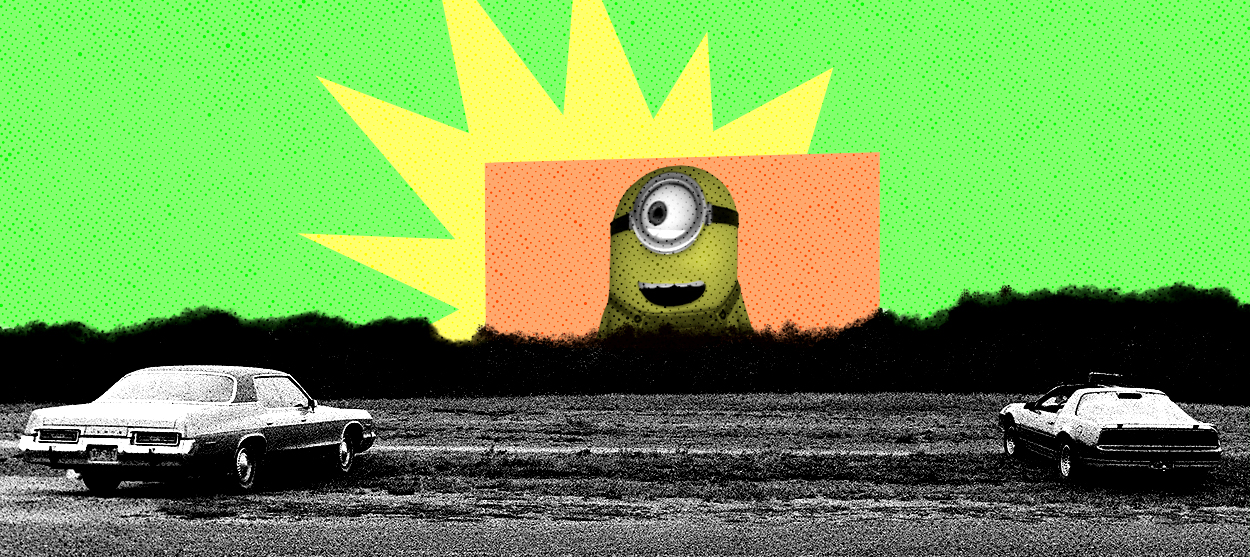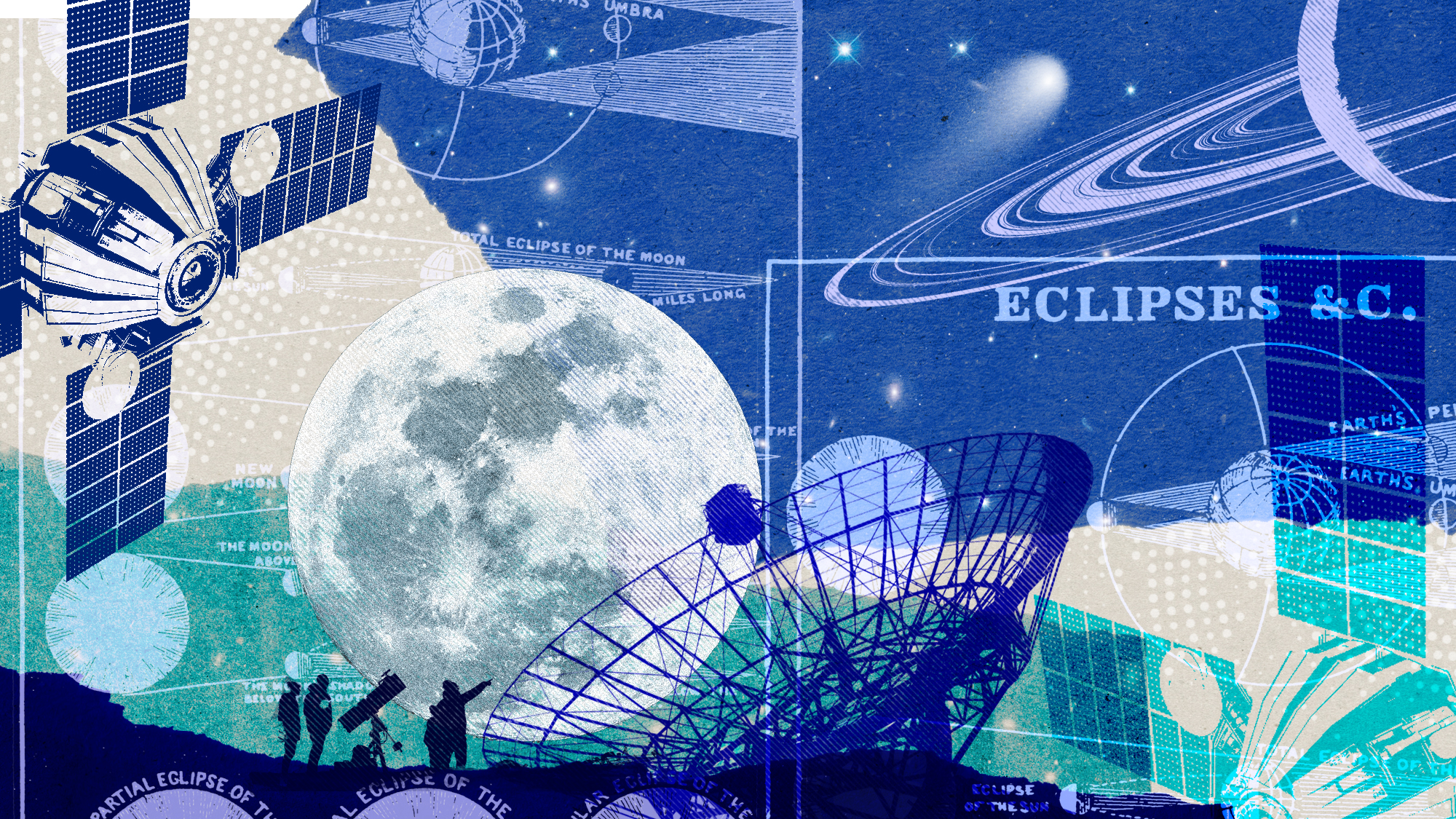Let's not pretend drive-in movies are the future
They can be nice — if you don't actually want to watch a movie


There is nothing quite as sweet as an American summer. Milkshakes, swimming in the lake, driving with the top down, flipping burgers on the grill, hiding from the heat with a sweetheart in the air-conditioned dark of a movie theater. Only now the milkshake shack is shuttered, the park is closed, there's nowhere to bother driving to, your friends have all gone back to their parents' places out of state, and movie theaters won't be safe to visit anytime soon. What's a Yank to do?
All at once, the few drive-in theaters left have found themselves with the perfect storm: Americans can't sit close together, but they're dying to get out of the house. Alongside high-tech modern lifesavers like Zoom and apps that bring you food, the humble, retro drive-in theater has likewise found itself in the awkward position of benefiting from a global pandemic: the venues are "making a comeback thanks to coronavirus" and "just might save the film industry." But drive-in movie theaters — while perhaps fun as a once-a-year novelty — are not going to be the future of film.
The drive-in dates back to 1933, when a New Jersey entrepreneur stuck a Kodak projector on the hood of his car; by the 1950s and 1960s the concept was booming, with over 4,000 such theaters around the country. The venues served important cultural roles at the time, contributing to the suburbanization of America as well as the loosening of social mores, being, as they were, places where "spectators could smoke, eat, talk, and make out," writes critic Mary Morley Cohen. Importantly, during a time when indoor movie theaters were segregated in the South, drive-ins did not enforce Jim Crow laws and were largely "completely desegregated."
The Week
Escape your echo chamber. Get the facts behind the news, plus analysis from multiple perspectives.

Sign up for The Week's Free Newsletters
From our morning news briefing to a weekly Good News Newsletter, get the best of The Week delivered directly to your inbox.
From our morning news briefing to a weekly Good News Newsletter, get the best of The Week delivered directly to your inbox.
Over the years, though, the appeal has waned. As color TVs became widespread, followed by home movies and VHS tapes, you no longer needed to go to a drive-in to watch a movie in relative privacy. Digital projection was the nail in the coffin: Converting a drive-in from celluloid to digital costs "over $70,000 ... partly because it takes a much stronger bulb to project across a field to the screen," Quartz writes. Today there are only 348 drive-in theaters left around the country, making up a mere 1.5 percent of all movie theaters. Many have been struggling to hang on for years.
But while drive-ins might now seem like a no-brainer for filmgoers who are missing the experience of cinemas during the pandemic, in practice they're a poor substitute. While there's definitely a thrill to driving your car to the movies and then — gasp! — not having to get out, the actual "watching the movie" part tends to be subpar at best. The screen is usually quite difficult to see, the sound piped over the radio or out of provided speakers is of poor quality, and distractions abound, from blinking dashboards to automatic headlights that won't turn off, to kids playing between cars and teenagers making out in your peripheral vision. While there's certainly a value to going to the drive-in for the sake of "going to a drive-in," it's not really about a movie at all; you'd be better off watching at home on a laptop if you actually wanted to see something.
Additionally, while it's no secret that the film industry is suffering greatly from the pandemic, the kinds of movies being shown at drive-ins aren't the ones in urgent need of financial support right now. Because of the low-quality nature of the viewing experience, drive-in theaters tend to rely on a rotation of crowd-pleasing, noisy blockbusters or nostalgic classics that you only need to half-watch (others might rely on trashy or culty B-movies, which were long a staple of the drive-in circuit as their reputation became less family-friendly). But it is the arthouse and indie studios and theaters, which were already the most vulnerable when the pandemic hit, that can't expect to make up revenue with the help of using the drive-in theaters as venues. If you're worried about the health of the industry, you're better off buying a movie to watch in a virtual cinema.
There is an environmental concern with drive-in theaters too, beyond even just the lines of idling cars that inevitably pile up trying to get in and out of the lot. "Drive-ins can occupy 30 acres or more," writes The New York Times, and many designated theaters don't get much use except in the short hours of darkness during the summer season. But "surface parking lots are the scourge of urbanism," transportation planner Dan Malouff has written. "They take up valuable land that could be used for activity-generating buildings, and they spread development out so that walking and transit use are more difficult."
A free daily email with the biggest news stories of the day – and the best features from TheWeek.com
In many places, to be fair, drive-in theaters are appearing as "pop-ups," converting lots that were otherwise not being used during the pandemic. In addition to the nationwide screenings planned in Walmart parking lots, the most notable are in New York City, including at a diner in western Queens and on the waterfront in Greenpoint, Brooklyn (movies are also being planned for the Yankee Stadium parking lot in the Bronx as well). But these drive-ins require audiences to arrive, and stay, in their cars — a COVID-19 precaution — raising the question of who exactly the screenings are supposed to be for, since the majority of New Yorkers don't own cars, especially outside of Staten Island and the far reaches of Queens. With tickets running $54.99 at the Brooklyn drive-in, it's clear we've come a long ways from the affordable appeal of the original concept, anyway. What's more, if the pandemic has taught urban-dwellers anything, it's that America's car-centric approach to transportation and entertainment has "commandeered" the design and function of our cities.
The biggest draw of a drive-in theater might be the pure nostalgia factor, the way sitting in a dark car as the movie is about to begin transports you back to a seemingly simpler, more romantic, less plague-ridden era. Drive-ins don't only appeal to Boomers who want to relive their childhoods, but anyone raised on what blogger Marc Schenker describes as Americana's idealized images of "1950s' diners, hot rods, fries, milkshakes, and drive-in movies." But that idea is also fraught, especially in our current moment. As writer Stephanie Coontz has warned in The New York Times, "you can't just stroll through the past, picking the things you like and skipping the ones you don't, as if historical eras were menus [where] you could pick one from column A and one from column B. They are, rather, interconnected social, economic, and political systems. Whether someone would really want to return to a particular time depends on socioeconomic class, age, sex, race, and health."
I'm also yearning for the day I get to be back around strangers in the dark, gripped by what's unfolding in light and shadow on the screen before us. But for the time being, it's simply not safe to be back around other people. While there's an appeal to the drive-in movie not as moviegoing exactly but as a separate, almost "vaudeville" experience, it's certainly not the future of the industry. Film is going to need a lot more than drive-in theaters if it's going to survive this pandemic — and we are, too.
Jeva Lange was the executive editor at TheWeek.com. She formerly served as The Week's deputy editor and culture critic. She is also a contributor to Screen Slate, and her writing has appeared in The New York Daily News, The Awl, Vice, and Gothamist, among other publications. Jeva lives in New York City. Follow her on Twitter.
-
 Will the mystery of MH370 be solved?
Will the mystery of MH370 be solved?Today’s Big Question New search with underwater drones could finally locate wreckage of doomed airliner
-
 The biggest astronomy stories of 2025
The biggest astronomy stories of 2025In the spotlight From moons, to comets, to pop stars in orbit
-
 Why are micro-resolutions more likely to stick?
Why are micro-resolutions more likely to stick?In the Spotlight These smaller, achievable goals could be the key to building lasting habits
